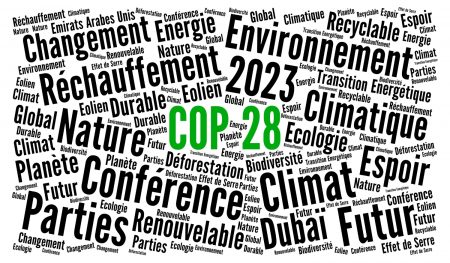私的京都議定書始末記(その17)
-北海道洞爺湖サミット-
有馬 純
国際環境経済研究所主席研究員、東京大学公共政策大学院特任教授
将来枠組みをめぐる先進国の「片思い」
次に先進国、途上国の緩和行動、更には2009年末に合意するとされている将来枠組みについての文言を比較しよう。
(G8首脳声明)
パラ24 (第1文、第2文略)We recognize that what the major developed economies do will differ from what major developing economies do, consistent with the principle of common but differentiated responsibilities and respective capabilities. In this respect, ①we acknowledge our leadership role and each of us will implement ambitious economy-wide mid-term goals in order to achieve absolute emissions reductions, and, where applicable, first stop the growth of emissions as soon as possible, reflecting comparable efforts among all developed economies, taking into account differences in their national circumstances.② We will also help support the mitigation plans of major developing economies by technology, financing and capacity-building. ③At the same time, in order to ensure an effective and ambitious global post-2012 climate regime, all major economies will need to commit to meaningful mitigation actions to be bound in the international agreement to be negotiated by the end of 2009.
(主要経済国首脳声明)
パラ2 (第1文略)Recognizing the scale and urgency of the challenge, we will continue working together to strengthen implementation of the Convention and to ④ensure that the agreed outcome maximizes the efforts of all nations and contributes to achieving the ultimate objective in Article 2 of the Convention (以下略)
パラ3 (前段略)Second, ⑤without prejudging outcomes or views of other nations, we understand that the common understandings in this Declaration will help advance the work of the international community so it is possible to reach an agreed outcome by the end of 2009.
パラ5 In this regard, the developed major economies will implement, consistent with international obligations, economy-wide mid-term goals and take corresponding actions in order to achieve absolute emissions reductions and, where applicable, first stop the growth of emissions as soon as possible, reflecting comparable efforts among them. At the same time, ⑥the developing major economies will pursue, in the context of sustainable development, nationally appropriate mitigation actions, supported and enabled by technology, financing and capacity-building, with a view to achieving a deviation from business as usual emissions.
G8首脳声明の下線部①、②では先進国が緩和において主導的役割を果たすこと、途上国の緩和に対して支援を行うことが記され、途上国に相当部分配慮した書きぶりになっている。注目すべきは先進国の排出削減につき、「排出量の絶対量の削減を実現するため、そしてまずは排出量の増加をできるだけ早く止める」と書かれていることだ。これは当時、排出量が増加傾向にあった米国の強い主張を容れたものであろう。しかしG8共同声明のもっとも強い思いは下線部③において「効果的で野心的なポスト2012年のグローバルな枠組みを確保するためには、全ての主要経済国が、2009年末までに交渉される国際合意によって拘束される、意味のある緩和行動にコミットする必要がある」としていることだ。ここでは先進国、途上国の別なく、すべての主要経済国が国際枠組みで拘束される緩和行動にコミットを求められており、京都議定書の考え方とは根本的に異なる。
主要経済国首脳声明の関連部分をみると、将来枠組みについては、下線部④で「すべての国の努力を最大化し、条約2条の究極目的を達成する」、下線部⑤で「交渉結果を予断せず・・・2009年末までに合意された成果が得られるよう、本共同声明の共通理解が国際社会の作業を加速させるものと理解」とあるように、要するに何も言っていないに等しい。G8共同声明に盛り込まれたような「すべての主要国が意味のある緩和行動をコミットし、拘束される」という考え方は予想されたことだが、「片思い」に終わった。バリ行動計画の結果や成果イメージについて先進国、途上国で認識ギャップがあり、2009年末に向けてこれから交渉を本格化させようという時に、2008年半ばの主要経済国首脳声明で踏み込んだ表現が合意されるはずもなかった。
What is Business As Usual?
G8共同声明にはなく、主要経済国首脳声明に盛り込まれた注目すべき要素は、主要途上国の緩和行動に関する下線部⑥の部分である。前半部分はバリ行動計画のコピーであるが、末尾に「自然体(Business As Usual)からの乖離を確保するため」という文言が入っている。主要途上国の排出量が、何も対策をとらない場合よりも少なくなるようにするという意味である。主要先進国が排出量の絶対量の削減を求められている中で、主要途上国についても何らかの方向性が不可欠であるとの先進国の強い主張を反映したものである。これは確かに前進であったが、「自然体」がどのレベルなのかという問題は残る。主要途上国が将来にわたって排出量を増加させても「確かに排出量は増加しているが、本当はもっと増加するはずだったところ、種々の努力によって自然体から乖離させた」と強弁することが可能だからだ。温室効果ガス/GDP原単位の低下、あるいはセクター別原単位の改善といった客観的指標を用いることが本来は望ましいといえよう。
セクター別アプローチ
私がエネルギー戦線において省エネ、セクター別アプローチに取り組んでいたのと同様、気候変動戦線においてもセクター別アプローチを盛り込もうという努力は続いていた。その結果、G8共同声明においては、セクター別アプローチに関するパラが入った。
(G8共同声明)
パラ25 Sectoral approaches can be useful tools to improve energy efficiency and reduce GHG emissions through dissemination of existing and new technologies in a manner compatible with economic growth. We ask the IEA to enhance its work on voluntary sectoral indicators through improved data collection, complemented by business initiatives.
主要経済国首脳共同声明でも、下記のようにセクター別アプローチに関する言及が入った。途上国支援を含む国際協力的側面が強い文言とは言え、セクター別効率の情報交換、分析、技術ニーズの特定等、バリ行動計画に比べ、セクター別アプローチの諸要素を盛り込んだ文言になった。セクター別アプローチに強い思いを持つ日本にとってはまずますの成果であったと言えよう。
(主要経済国首脳会合共同声明)
パラ10 Work together on mitigation-related technology cooperation strategies in specific economic sectors, promote the exchange of mitigtation information and analysis on sectoral efficiency, the identification of national technology needs and voluntary, action-oriented international cooperation, and consider the role of cooperative sectoral approaches and sector-specific actions, consistent with the Convention.
洞爺湖で異動の内示
冒頭記したように、G8首脳声明については外務省のシェルパが、主要経済国首脳声明は、地球規模課題審議官をヘッドとする気候変動交渉チームが交渉に参加する。エネルギー部隊の私は、洞爺湖に行ったものの、首脳レベルと各省首席代表レベルが宿泊している山上のウィンザーホテルではなく、麓にある洞爺湖温泉のホテルの一つに滞在し、万が一の問い合わせに備えていた。経産省のサミット支援部隊の大部分は「麓組」であり、ただ待っているのも勿体ないので、1日に5回温泉に入ったという某幹部もいた。
ところで洞爺湖サミット中の私に取っての一大事件は産業技術環境局環境担当審議官の内示を受けたことであった。2008年、2009年と温暖化交渉は大きな盛り上がりが予想されることから、これまでの経験を活かし、国際交渉に注力せよということである。「あるいは」という予感がないではなかったが、久しぶりに温暖化交渉の最前線で戦うということで、武者震いする気持ちと「ああ、またこの世界に戻ってしまった」という気持ちが交錯したことを覚えている。
















